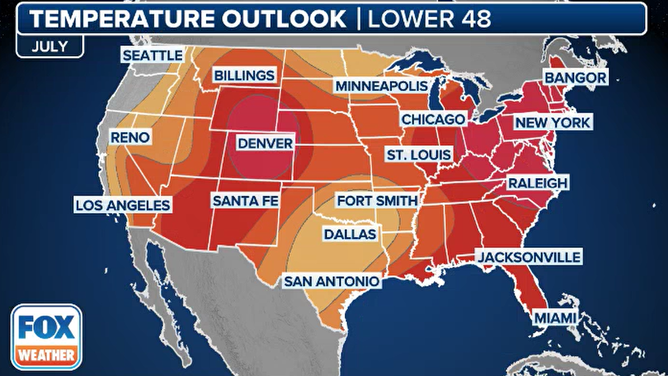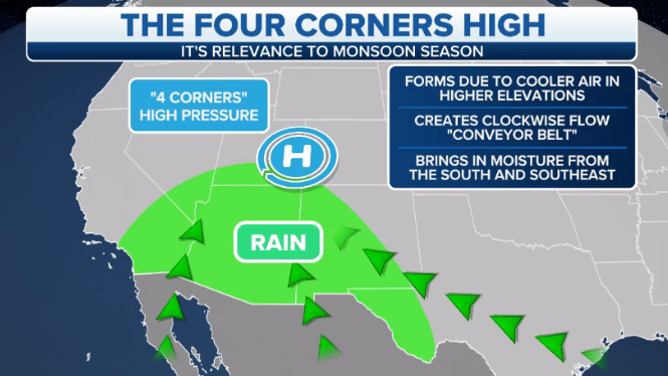July is expected to be toasty but how high will temperatures surge?
July is typically the warmest month of the year for the contiguous United States. According to NOAA records, temperatures have risen at a rate of 0.83 degrees Fahrenheit per century. July 2023 was reported to be the 11th warmest on record for the U.S., while precipitation ranked in the middle of the pack.
US July temperature outlook
Nearly the entire Lower 48 is expecting above-average temperatures in July, with the West Coast possibly staying close to normal. July is typically the warmest month across the country but the outlook favors hotter than normal temperatures.
The latest climate outlooks for July show NOAA expects much of the country to exhibit above average temperatures while many communities see a rainfall deficit.
Typically, July is the warmest month around the nation with average highs in the 80s and 90s, but with the addition of heat waves, normal might feel downright cool compared to what the country is expected to experience.
NOAA’s temperature outlook shows most of the country is in store for heat that has a higher probability of being more extreme than usual with only the West Coast in line for normal temperatures during the second month of meteorological summer.
The Rockies, mid-Atlantic and Northeast make up the areas that have the highest probabilities of seeing temperatures that are above normal.

July temperature outlook 2024
(NOAA)
LITTLE-KNOWN WEATHER PATTEN WHEN EL NINO AND LA NINA ARE NO LONGER IN CONTROL
It remains to be seen whether the average monthly temperature will challenge the all-time record set back in July 1936 of 76.77 °F.
According to NOAA historical data, July 2022 came closest to surpassing the 1936 record but fell short by about 0.4 °F.
While overall temperatures are expected to be warmer than those experienced in June, it's possible that some cities in the northern tier have already had their warmest day of the summer.
A massive ridge that covered parts of the Ohio Valley and Northeast challenged all-time records for its scope, rankings that likely won’t be tested again anytime soon.
An element of the summer forecast that remains uncertain is the precipitation outlook, with forecasters expressing less confidence in this realm when compared to temperatures.
July precipitation outlook
Most of the country is expected to exhibit drier than normal conditions during July, but there are few exceptions.
NOAA suggests that parts of the eastern U.S. and Gulf Coast could see enhanced tropical moisture, potentially resulting in a wetter July than usual.
States included in this moisture zone are Louisiana, Mississippi, Alabama, Georgia, Florida and the Carolinas.

July precipitation outlook 2024
(FOX Weather)
The government-produced outlook does not specify how many inches of rainfall a region might see above or below average. Instead, it highlights the probability of precipitation being below or above typical levels.
Communities in the Ohio Valley and Northwest are at a higher risk of experiencing below-normal precipitation.
A notable mention is the Desert Southwest, where computer guidance indicates a relatively lackluster monsoon.
Many Southwest communities rely on the monsoon season for a majority of their annual rainfall. Without a significant amount of precipitation, these regions could once again face periods of tight water restrictions and increased fire dangers.

Shown on the map is the typical weather pattern that dominates during much of the North American monsoon season.
(FOX Weather)
